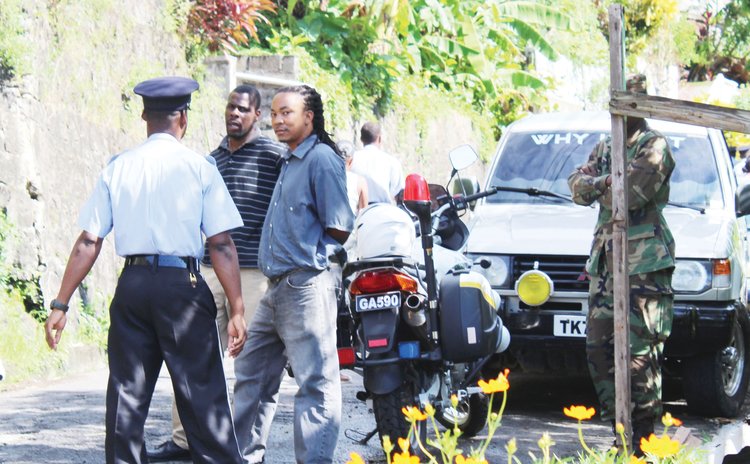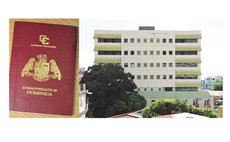You want to Curb Crime? Confront the Causes

Last week there was a blast of bullets in the restricted cove of the Blast, a gaming establishment in Loubiere that could have become Dominica's first modern-day massacre. One life was lost that evening but for the grace of God, dozens would have been mowed down.
That was not the only killing in this so-called peaceful paradise in recent days. In Bath Estate, a young man was beaten to death; his body was discovered the following morning. And near the idyllic Fresh Water Lake at Laudat, a man's body was found lying in a pool of blood. All this happened within a few days.
These incidents should not be interpreted to mean that Dominica has descended into anarchy and that we are now competing with Trinidad, Jamaica and St. Lucia for the unenviable title of the murder capital of the Caribbean. Not at all, but we should take note of these worrying trends.
You will recall that a few years ago Dr. Francis Severin, the then Head of the University of the West Indies Open Campus Dominica (now Deputy Principal) came to a similar conclusion in his analysis of the crime situation in Dominica. But when he spoke about it, he was verbally executed by politicians of the ruling Dominica Labour Party because they apparently prefer Dominicans to bury their heads in the sand and pretend that there is no crime to worry about in paradise. In addition, that could be an explanation for both the Commissioner of Police and the Statistical Division refusing our repeated requests for the release of crime statistics.
Nonetheless, a few months ago we indirectly obtained an indication of the reality of crime in Dominica in 2017 and 2018. Here are the figures for 2018: Murder (11); Rape (6); Grievous Bodily Harm (58); Burglary (595); Kidnapping (1); Indecent Assault (21) and Robbery (69).
For 2017 the figures were: Murder (12); Rape (12); Grievous Bodily Harm (51); Burglary (845); Kidnapping (4); Indecent Assault (34) and Robbery (72).
Of course, the crime statistics for 2019 has not been released. That goes without saying.
Nonetheless, we are aware that crime has been a major constraint to the development of the Caribbean and leaders must now do much more than talk about the problem. According to the World Bank report: Crime, Violence and Development Trends, Costs and Policy Options in the Caribbean" murder rates in the Caribbean are higher than in any other region of the world and assault rates are significantly above the world average. The causes of such alarming statistics are well known.
For instance, we know that Caribbean countries are fast lanes for the cocaine traffickers of Latin America and that gun ownership, an offshoot of the drug trade, is the fuel that generates violent crimes. Youth violence, we are told, has become a major threat to public health and criminal deportees from the United States have directly and indirectly contributed to the increase in crimes in the region. Additionally, the criminal justice system is ineffective and inefficient. And the emergence of gang culture among our youth is one of the most disturbing aspects of growing crime.
Additionally, apart from the violence and corruption associated with the drug trade, the enterprise tends to forge the normalization of crime. That includes murder. The drug trade also contributes to the proliferation of firearms and, of course, causes the diversion of scarce human and financial resource. Most importantly, the drug trade is one of the major causes of escalating youth violence that we have been experiencing in the region in recent years. But there are other contributing factors such as unemployment, alcohol abuse and the proliferation of organized gangs.
Undoubtedly, one of the solutions to the problem of high crime rates in the Caribbean is placing adequate resources into law enforcement agencies. There are other approaches such as strengthening the family, the foundation on which the structure of society is built.
The point that we need to stress here is that as we continuously discuss the high incidence of poverty in Dominica we fail to consider its causes and effect. It is our view that poverty means much more than someone's inability to pay bills. Poverty not only imposes short-term hardship on thousands of Dominicans, it also has long-term consequences for children. The evidence is overwhelming that poverty compromise children's health, reduces their educational prospects, increases their risk of arrest and incarceration and diminishes options for the future.
Additionally, high levels of poverty and unemployment have a significant impact on levels of crime and violence. Poor young persons, in particular, generally have little regard for issues like corruption that is now increasingly accepted and normalized.
Undoubtedly, increasing crime rates are caused by high levels of poverty. Speaking at the University of the Virgin Islands a few years ago, on the topic: "Poverty and its alleviation in the Caribbean", Dr. Compton Bourne, the former President of the Caribbean Development Bank, contended that poverty contributes to societal exclusion, loss of self-confidence and the absence of commitment to the future of the community.
"Even though poverty is not the only cause of crime, it is a cause," Dr. Bourne said.
The point we need to stress here is that much more needs to be done to control the spate of crimes in Dominica before it is too late. Otherwise the nation's continuing slide into criminality is assured.




